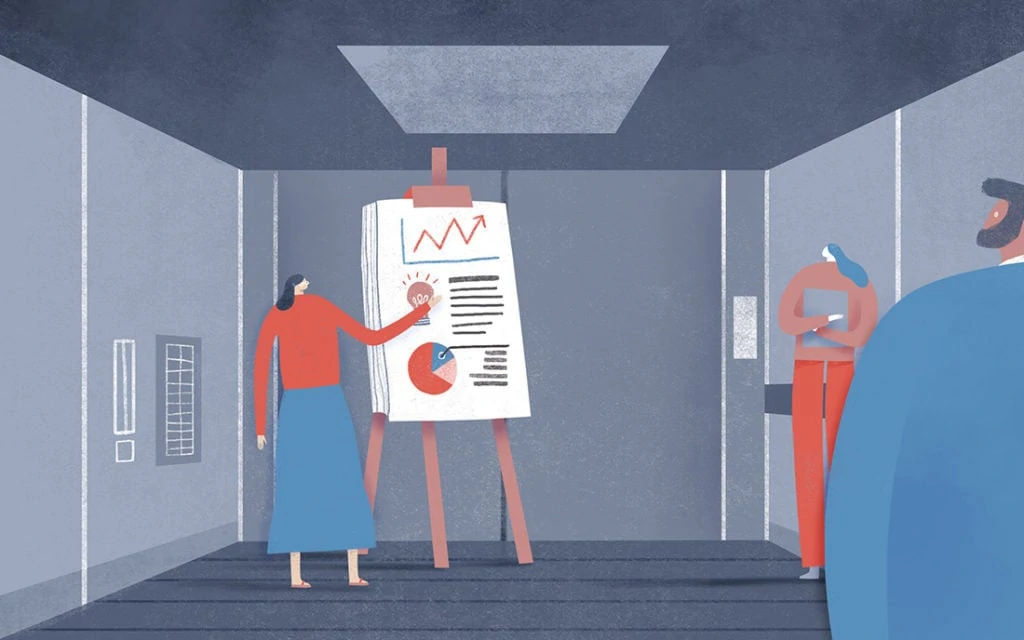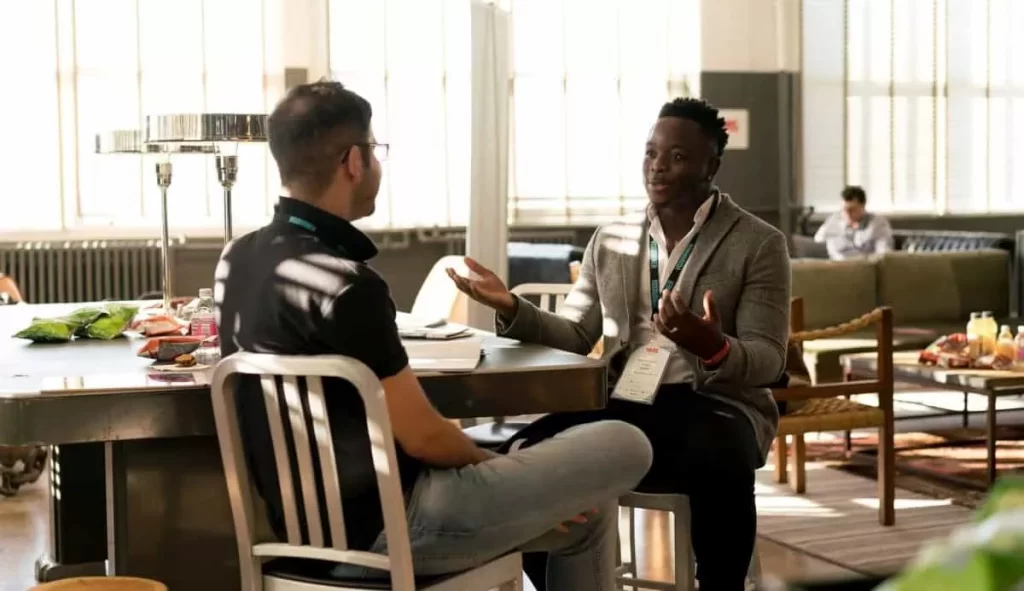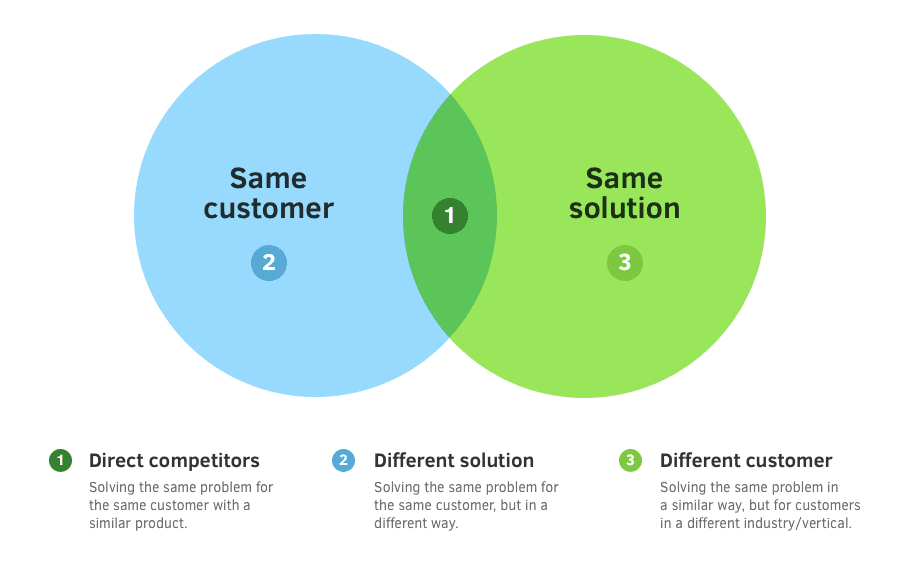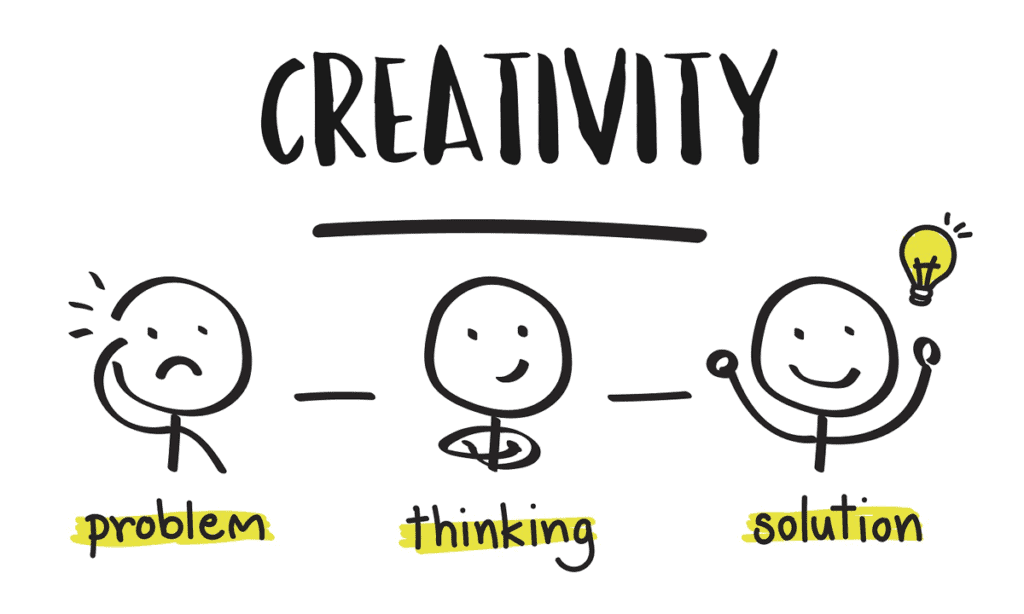8 Tips to Help You Grow as a Freelance Designer
Freelance design has exploded in the last few years, and while the numbers might be significant, many freelance designers still do it without knowing what they are doing.
If you want to become a freelance designer, you're probably thinking of its benefits. While working on your own means having total freedom, it can be challenging to manage everything independently, especially when you're trying to build a business around your design work.
But, the fact is, as a freelancer, you have the power to make the decisions that will impact your business' growth. This article provides tips on how to grow as a freelance designer, so you can create a profitable business while enjoying your freedom.
Here are some tips and advice I've gathered to help you as a freelancer or designer who wants more clients and better-paying jobs.
Table of Contents
Build Your Portfolio

Portfolios are one of the most effective tools to build your freelance career as a professional designer. It's the best way to showcase your portfolio, including all the works you've created or designed for clients.
It allows you to display your expertise, skills, and experience. It lets clients know what they should expect and helps them decide if you're a good fit for the job. And it helps you to stand out from the crowd and attract potential employers.
So, if you're wondering how to build a freelance portfolio, the following article will give tips to help you succeed.
1: Decide what you want to show in your portfolio
First, you must decide what you want to show in your portfolio. It depends on your freelance design, but you can showcase some of your past work, a series of logo designs, web designs, etc. This will help your potential clients see what you're capable of doing.
2: Find a good website to host your portfolio
Now that you've decided what you want to showcase, you need to find a place where you can showcase it. Some people use their personal websites to showcase their portfolios. However, this might not be a great idea if you want to start freelancing immediately. If you don't have your website, you can always create a free website on a service such as Wix, Weebly, or Squarespace.
3: Choose a design that's easy to navigate
Your portfolio needs to be a one-stop-shop for your potential clients. A good portfolio should be easy to navigate so that clients can quickly and easily find all the information they need. You can make it easier by using a simple and clean design that's easy to read.
4: Include the links to social media profiles
You should include a link to all your social media pages in your portfolio. Not only will this give your potential clients a chance to see who you are as a person, but it will also allow them to learn more about you and get to know you better. Including a website link is essential so clients can learn more about your work.
5: Make it attractive
It doesn't matter how great your portfolio is if it's boring. You need to make sure that your portfolio is exciting and appealing so that clients will want to take a look. There are many ways to do this, but one of the most effective ways is to use high-quality images.
It's easy to make your portfolio more visually appealing by adding images. You can use images highlighting your skills and experience and ensure they're relevant to your work.
Find Clients

Freelancing is great because it allows you to earn money online without the stress of working for someone else. This means you can spend less time at work but still make good money. However, finding clients as a freelancer can be challenging. That's why you need to know how to find clients as a freelancer.
When you first start freelancing, you'll have to put yourself out there to make a name for yourself. Your design portfolio will likely be the first thing potential clients see, so make sure that it's something that stands out. You'll want to show them that you have good taste and know what looks good on the web.
The most important thing you can do when trying to find clients is to put yourself out there. Many freelance designers focus only on their portfolios and not social media. You can use your social media accounts to advertise your services to potential clients.
When you create a post, you can make it private or public. You can use these different options to reach a specific type of audience. When you make a post public, you can share it with friends and followers who can view it. You can also tag people in the post, allowing them to follow you if they're interested in your work.
Social media is also a great way to find new clients. People look for services on social media. So, if you're looking to get new clients, you should be active on Twitter, Facebook, and LinkedIn. You can use hashtags to find people who are looking for a designer.
Your website is another excellent place to promote your services. Designers often have websites with information about themselves and their services. Potential clients may click through to your blog and portfolio when they visit your site. And you can add a call to action to your website. These calls to action can lead potential clients to your social media pages or email address.
As you can see, there are many ways you can find clients as a freelance designer. Make sure to use them all. Once you start getting clients, you'll quickly learn what works best for you and doesn't.
Pitch Clients

Pitching to clients is a crucial skill in freelancing. Many people think that being good at it is enough, but the truth is that most designers are not good at it.
When pitching, you should aim to sell yourself. You want to show your clients what makes you different, why they should work with you over others, and why they should hire you over others.
1: Set realistic goals for your pitch
Before pitching, make sure that you understand how you should pitch.
It is essential to set a goal for each pitch you do. For example, if you have a project, you may be unable to show everything about it at once. You need to break down your project into small chunks and plan accordingly.
For example, you may start by showing details about your project, such as the client, project scope, and the design brief.
Then you can expand on those details and show the client what you can do. This way, you are selling your skills while giving them a clear idea of what they can expect from you.
2: Use visuals
A good pitch is more effective when you use visuals.
This doesn't mean that you need to show a PowerPoint presentation. A simple, clean, and easy-to-read template will do.
Also, ensure you use high-resolution images so the client understands your design skills. Use images from various angles and zoom in on the parts you think are most important. The images you use should match the theme of your pitch.
3: Get familiar with your client
Before starting a pitch, try to get to know your client.
You can send them a simple email asking for their contact information and some background details.
Also, you can read about their company on social media. This will give you a better understanding of who they are and what they do.
4: Know the project timeline
Knowing the timeline is very important for a good pitch.
If you are doing a design project, you can ask the client for a rough timeline of when he expects to get the final deliverable. It is good to have a clear idea of the client's deadline.
5: Find common ground
Make sure that you find common ground before the pitch. This helps you develop a rapport with the client and build a connection between you and them.
Negotiate a Rate

Negotiating rates with clients can be a nerve-wracking experience, so I've put together some of my best negotiation tips to help you save money and avoid unnecessary stress.
When I started freelancing, I wanted to charge as much as possible, so I spent weeks learning the fine art of negotiating rates. I got better at it and started charging a lot less than I could have been getting.
I thought I'd share some of the things I've learned. I've been a freelance designer for 15 years now, and these tips have helped me negotiate reasonable rates for myself. So let's get into it.
1: Set Your Rates
It sounds obvious, but don't start the negotiations by asking how much they think you should be paid. Tell them what you charge, and ask them for their budget.
When you set your rates, you're not only making sure you get paid, but you're showing clients what you're capable of.
If you haven't already done so, create a pricing grid in MS Excel or Google Sheets. This can be very helpful when trying to price yourself into a job.
Start by listing your hourly rates, then list the number of hours you expect to work on the job. When you price yourself, start low. You might have to lower your prices a few times before getting an offer you like.
2: Make Sure You Have Enough Projects
If you're a new freelancer, you might be wondering if you're too busy. When you first start, taking on too many projects is easy. It's human nature to want to make more money right away.
But when you're starting, you should focus on just a few projects at a time. Even if you have to turn down projects, you'll learn more about your capabilities, and your rates will be lower.
I must constantly slow down and focus on my current projects. If I don't, I will not make any money and end up hating myself because I wasted a year of my life.
3: Don't Do Work Before Getting Paid
This one is important, and it's something I had to learn the hard way. When you start working without getting paid first, you might be surprised when you realise that the person you're working with doesn't have enough money.
If you don't want to have to cut jobs short, wait until you get paid before you start working on a project.
Keep Client Communication Open

Keeping client communication open has become necessary with the growing demand for freelance designers. You are one step away from a potential client, but how do you keep it open and avoid it being closed?
When a designer works freelance, keeping communication open is the most critical part of the work. The freelancer must know that they are going in the right direction to ensure that the work is high quality.
Open communication means the client can access the designer's progress through emails, phone calls or texts.
Steps to keep client communication open:
1: Create an email list
You don't need to send unsolicited email messages. But if you're receiving emails from clients, creating a list is a good idea to respond to them efficiently.
It's also a great way to organise all the information about the project in one place. This way, you will save time responding to the client and not miss any critical updates.
2: Use a messaging service
A messaging service is like a virtual assistant. It takes care of all the email sending and receiving for you. It is a great way to stay organised and keep your communication open.
But be careful with your messages. Sending too many emails or SMS messages could get you into trouble. You must be professional and only communicate with the client when necessary.
3: Set up a Skype group chat
This is another way to keep communication open with your client. All you need to do is share your Skype group with all the clients you would like to communicate with.
4: Send your work through email
The easiest way to send your design work to your clients is by using email. It's easy to send your designs in email format, and it will ensure that they are sent with all the necessary files.
Keep in mind that if you don't provide the files with the client's needs, you may lose the opportunity to work with them. Always remember to attach all the required files with your email.
5: Provide a link to a site or online gallery
The last option that you can use to keep your communication open with your clients is to provide them with a link to your website. They can check your work in the same place as you.
You can link your website to your blog, portfolio, social media accounts, etc. Closing communication can be detrimental for a freelance designer. You must never forget that your responsibility is to keep the communication open.
Know Your Market

Are you a freelance designer? If yes, then you must be aware of your target market. Today, many freelancers struggle to know their market. So, if you are struggling to determine your target market, here are some tips to help you know your target market.
If you are a freelance designer, your target market will be a group of customers. As you are a freelance designer, your client will be the customer who needs your service or product. For example, you are designing a website for a company, and your client is that company.
So, you need to get into that company's mindset to understand how they think. Then, you should consider the products they sell, the industries they belong to, and even the kind of projects that they are working on.
Doing all this will help you get the right idea about what they are looking for and what products they need. This way, you can decide which one to offer them.
1: What does their business do?
First, you need to find out what your client's business does. This way, you can get the most relevant information about your client.
For example, let's say that a company has hired you to design a website. You need to get the company's details, such as its type, size, and other information.
You need to know whether it is a small business or a large corporation. You also need to know whether it is a technology-based or manufacturing company.
You can simply ask if you don't know what your client does. Once you get the required information, you can refer to the website to understand more about the company.
2: What does their brand look like?
Next, you must find out your client's logo and branding. You need to know the type of business that your client belongs to. Is it a small business or a large corporation? What industry is it in?
The answers to these questions will help you develop a unique identity for your client. You can either create a logo for them or use their existing logo.
3: How do they see themselves?
The next step is to understand how your client views itself. When designing a website for your client, you can ask them to write their thoughts about their business. This will give you an insight into how they view themselves.
You can also ask them what kind of impact they want to make on the world. These are essential aspects of your client's personality.
Stay Focused

It's hard to stay focused as a freelance designer, especially when there are so many projects to work on and new clients to meet. This section will look at how to stay focused as a freelancer.
You probably already know that staying focused is one of the hardest things to do when working as a freelancer. You have so many projects, and you're working on them all. There are often deadlines, and sometimes you just don't know how to make it all fit into your schedule.
But here are some ways to stay focused as a freelancer:
1: Start early
When thinking about the next project, consider what you want to achieve. Are you hoping to create an exciting logo design? Or maybe you're working on a site that needs a new look. Whatever it is, you need to have a clear goal.
Starting early gives you something to aim for. This way, when you sit down and think about what you want to do, you'll have a bit of a plan and make sure everything fits in.
2: Make a list
Before you start designing anything, list everything you want to do. For example, if you're making a logo for someone, you'll want to list their company name, business, and maybe some images they use.
Think about what you want to achieve. Write it down, and then write down what you need to do to get there. Then, you can tick each thing off your list as you go along.
This way, you'll know that you've done everything and won't miss out on any critical tasks.
3: Be organised
There's no point in starting a project if you don't know where to begin. And the same goes for any other aspect of your work. It would help if you were organised to ensure you get all the work done.
This means knowing where you keep your files and where everything is when you need it. For example, if you're making a website for someone, you'll need to know how to work with Photoshop and InDesign. When designing a logo, you'll need to know what fonts you want to use and how to make them look perfect.
If you've got the right tools and know where they are, you'll be able to work quickly and efficiently. And this is a massive advantage as a freelancer.
4: Use technology
Technology is a big part of working as a freelance designer. You need to know how to use Photoshop and InDesign and how to make designs that look professional.
You could miss much potential work if you're not using these programs.
Keep Your Design Process Organised

Design is an integral part of your freelance career. To become a successful freelance designer, you must have good design skills. Designing is a skill, and it requires lots of practice and experience. But, having a great design process doesn't always mean you will get results.
As a freelance designer, you must create a design process to get better results and keep your design process organised. In this position, I'm going to show you how to improve your design process and how you can keep your design process organised.
A design process is a way to plan out the design process of your work. Every project needs a specific design process to get the best result for the client. To develop a good design process, you must first understand what you're trying to achieve. You need to consider the end and main goals of your work. Also, consider your time frame and budget. You can get help with designing a logo from a professional logo maker.
After knowing what you're trying to achieve, you can start thinking about your design process. A well-organised process helps you keep track of the tasks you need to complete to create the perfect design for the project. This also helps you stay focused and productive while working on your projects.
In your design process, you should be able to define all the different components of the design process. These components include the project's goal, the type of design required, the style of the design, and the materials needed.
You should also be able to create a plan of how you're going to complete the different tasks. You should also create a timeline of the different stages and tasks.
Create a design process for your freelancing business
Freelancing is a great way to make money and build your freelancing career. You can use this opportunity to gain some skills and learn new things. You can use freelancing as a way to improve your design skills and also to help you get new clients.
You should have a design process that helps you organise your work, manage your time, and keep track of your progress. A well-designed process helps you to manage your projects and clients effectively. This process should help you to be more productive.
The design process is an essential part of your freelancing business, and you should be able to create a design process to manage your workflow.
Conclusion
As a freelancer, you often face tough choices regarding marketing and promoting your work. Are you going to focus on creating great work or finding new clients? If you're looking to grow as a freelancer, you'll want to focus on all aspects of your business. This includes marketing, networking, and more.
While working on your projects is essential, you must also ensure that you get enough work and clients. Here are eight tips to help you grow your business.
Subscribe to my weekly newsletter to get the latest tips, tricks and inspiration delivered directly to your inbox.
